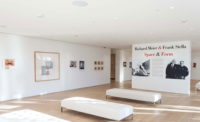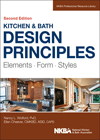Santiago Calatrava’s 2,000-foot-tall Chicago Spire is a lofty experiment in bird-safe design. The residential skyscraper is rising in the midst of a large year-round bird population and in the path of a major migratory flyway on the shores of Lake Michigan, but its glass is designed to be visible to birds, which should help prevent fatal collisions.




Studio Gang Architects included several bird-friendly elements in its design of the Ford Calumet Environmental Center in Chicago, a 28,000-square-foot environmental education center due to open in 2009 (top) To reduce the possibility of bird strikes on the building’s south elevation, a porch is enclosed with a basket-like mesh with four-inch openings (second image). Studio Gang also incorporated bird-friendly strategies into the design of Solstice on the Park, a 26-story condominium tower in Chicago’s Jackson Park district, due to open in 2010 (third image). Low-e glass on the tower’s south elevation is angled to create self-shading and reduces its reflective qualities (above).
An estimated 1 billion birds die annually in the United States as a result of striking buildings, bridges, and other manmade structures. Many factors play a role, including lights, vegetation, and water. But glass is the main culprit, according to bird-safe design guidelines released in 2007 by the New York City Audubon Society, the Chicago Birds & Buildings Forum, and the City of Toronto. Since birds don’t perceive conventionally formulated glass as a solid barrier, they fly into it. They may mistake reflections as continuous space and be attracted to trees or other objects in or visible through a glassed-in space.
The design guidelines are largely an appeal to enlightened self-interest, saving birds while reaping the financial benefits of green building. A number of cities are pushing bird-safe design, although mostly as a recommendation. Toronto may adopt green building requirements that include bird safety criteria, and in Manhattan the environmental impact statement for the reconstruction of the World Trade Center addresses bird safety. A handful of top designers have made it a priority, and the USGBC is beginning highlight it, but advocates note that it’s far from a mainstream design consideration.
The guidelines emphasize creating “visual noise,” i.e., patterns that birds can register. With glass, this means enhancing ultraviolet-reflectivity, color, texture, or opacity. Keeping openings small also helps ward off birds. Shading, brises soleil, colored and reflective solar blinds, or curtains also alert birds to buildings.
As LEED gains traction, establishing bird-safe design on the scorecard can give it more of a boost. “We want to enshrine bird-safe design in LEED as a proven innovation point, and we need legislation and mandates,” says Bruce Fowle, senior principal at FXFowle Architects in New York. “The immediate goal is to have bird-kill reduction identified as an option in the LEED reference manual.”
But green building is no guarantee of bird-safety. If not patterned, tinted, or used in small panes, low-e glass has a dangerously mirror-like quality and green roofs reflected on surrounding buildings can lure birds into walls. With its highly reflective windows andnearby stand of trees, Emory University’s LEED-certified Mathematics and Science Center, designed by Cooper Carry and opened in 2002, decimated neo-tropical fall migrants. Officials were forced to drape netting over the building, according to chief environmental officer John Wegner, and bird safety has since been added to campus design criteria.
Bird safety is easier to sell when it overlaps with other green strategies, says Jeanne Gang, principal and founder of Studio Gang Architects, in Chicago. Her firm’s 26-story Solstice on the Park, in Chicago, uses angled glass, fritted glass, and visual cues to decrease bird strikes. “Slanted glass reduces solar heat gain but also works to effectively reduce bird injuries,” Gang explains. “Fritted glass reduces heat gain, and if it’s 50 percent, you can still see through it.”
Most birds can see ultraviolet light, which is invisible to humans, and in nature it often attracts birds, according to Daniel Klem, an ornithologist and biology professor at Muhlenberg College in Allentown, Pennsylvania. More tests are needed to see if birds avoid UV-reflective glass, he says, “but it would be the most elegant solution if it works.” The German manufacturer Isolar Glass already markets patterned, UV-reflective glass, and Guardian Global, of Auburn Hills, Michigan, expects to release a bird-safe line by 2009.
Installing glass that birds can see would be simpler than current options. “There’s no easy way to convince clients that they need dots every four inches or stripes or louvers or angled glass,” Fowle says. The New York Times Building, designed by FXFowle and Renzo Piano, uses thin horizontal ceramic tubing to form an external latticework that reduces heat gain and makes the building visible to birds.
While major cities located along migratory flyways get a lot of attention, they account for a comparatively small percentage of kills. The crucial next step, says New York City Audubon Society executive director Glenn Phillips, is “getting to the big designers of suburban and exurban buildings.”



